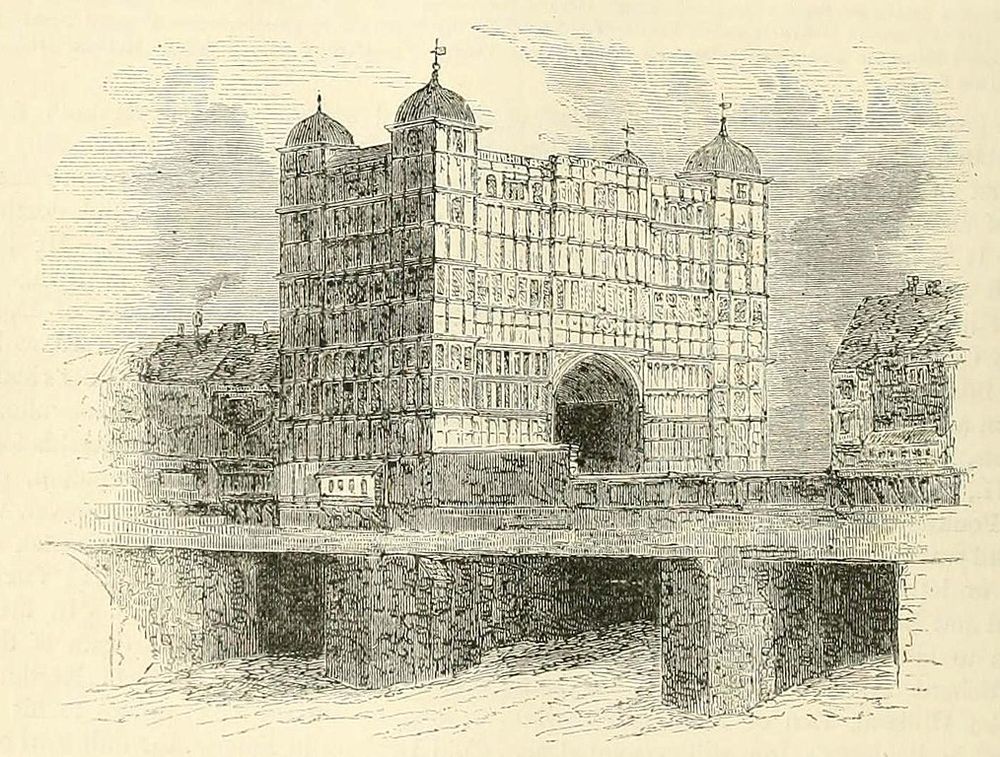The Old London Bridge that stood for 600 years over Thames was the river’s key crossing point, as well as the city’s prime real estate area.
During medieval times, it was natural for bridges to have buildings built upon them. Usually, it was a couple of shops, the bridge keeper’s house, and maybe a church. But London Bridge, being long and spacious, accommodated hundreds of buildings, some of which stood seven stories high and overhung the river precariously by several feet. The London Bridge was a great attraction, but it was bridge’s many buildings that made it the city’s icon.

Illustration of the Nonsuch House from 1873.
Among the many buildings that stood upon London Bridge, the most remarkable was the palatial Nonsuch House.
The Nonsuch House was so called because no such example stood anywhere else on earth. It was a four-storey wooden building that straddled the bridge’s central arch, with its principal front facing towards the Southwark end, the main approach to the city of London from the south. The house had large columns and windows, elaborately carved with ornate decorations, and stepped gables which protruded beyond the sides of the bridge. On its four corners were four towers crowned with onion domes. The gilded vanes on top of these domes could be seen from all parts of the city, as they stood clear above the surrounding structures of the bridge.
The Nonsuch House was notable because it was not built on site. It was originally constructed in the Netherlands, then taken apart and shipped to London in pieces, where it was reassembled on top of the bridge. This makes Nonsuch House the world’s first prefabricated building. The Nonsuch House was reconstructed on the bridge without nails, mason's mortar, or smith's iron. Only wooden pegs were used in the construction.
The Nonsuch House was completed in 1579, and it stood undisturbed until 1757, when the City decided that the bridge had become too congested with buildings, many of which were in dilapidated state. So they demolished every building on the bridge. The old bridge was widened and a balustrade was added along with stone alcoves for pedestrians to shelter. In 1831, the old bridge was torn down and replaced by a new bridge.
A model of Nonsuch House at Docklands Museum at London. Photo: Ben Sutherland/Wikimedia Commons
Old London Bridge in 1757 just before the renovation, by Samuel Scott.


